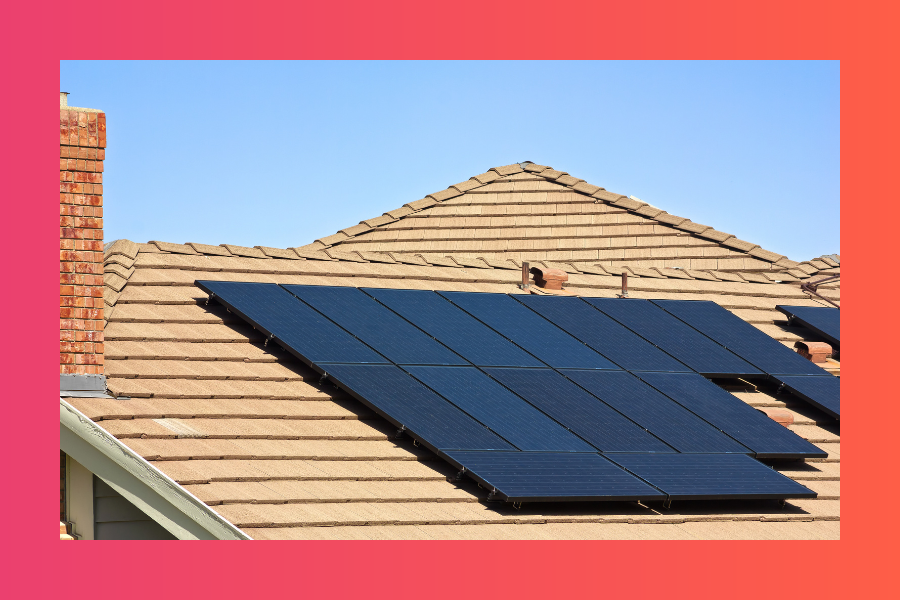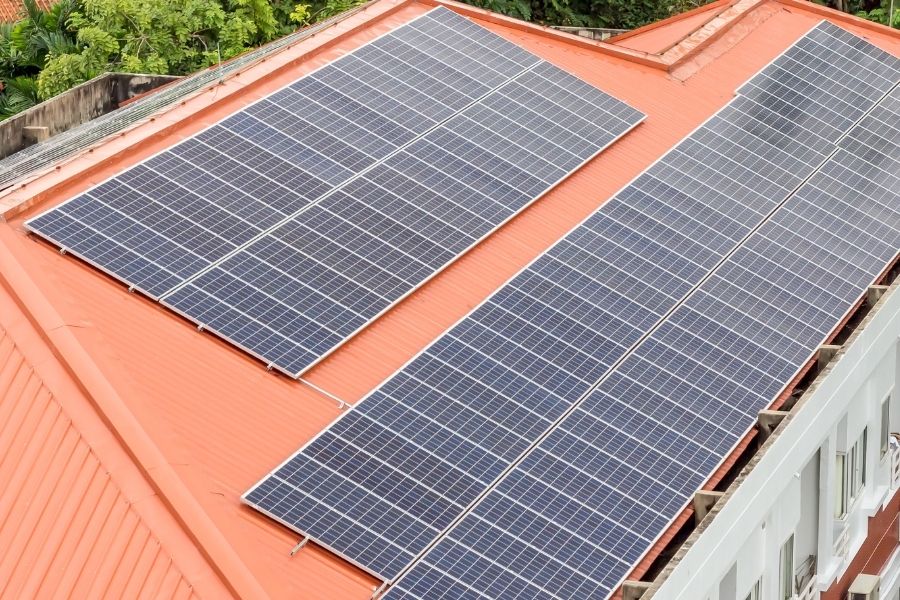7 min read
Is Australia Ever Actually Going to Embrace Nuclear Energy (and Should It)?
![]() Solar Trust Centre Team
:
Mar 8, 2023 9:00:00 AM
Solar Trust Centre Team
:
Mar 8, 2023 9:00:00 AM
.jpg)
Australia has recently seen the national conversation injected with a new push by some for the introduction and utilisation of nuclear energy going forward. This would be a first for Australia, as the nation has never adopted nuclear energy prior - the Lucas Heights reactor not included in this conversation given its unique use case - even while other countries such as the USA and Germany embraced it, and made it a key part of their energy mix. There are of course various reasons for this, given each country has its own unique energy landscape and cultural attitudes, and such factors can evolve over time. So, in and of itself, the fact Australia hasn’t taken up nuclear energy prior is not an out-and-out indication any notion it ever could would simply be invalid.
After all, Australia had never been connected to the internet until the first-ever link was made by the Great Southern Land to the global internet in June, 1989 - and if you’re reading this now we can all agree the decision to connect worked out pretty well! But is there actually a real and legitimate case to be made that the 2020s could finally be the decade for nuclear energy to achieve popular support in Australia? Or is this effort to elevate its potential to popular attention ultimately akin to a house built on sand, without real foundation?
Why the Struggle for Nuclear Energy Adoption Stalls in Australia
The starting point for the present debate and discussion regarding nuclear power in Australia ultimately begins with the end of World War 2. The 2 nuclear bombs dropped on Japan showcased both the awesome and fearsome power of nuclear matter. Ultimately, this starting point has continued to inform attitudes ever since in Australia (and around the world) as - while the use of nuclear matter for energy instead of warfare is clearly distinct - the legacy of World War 2, alongside ongoing concerns in the international arena about nuclear proliferation, continues to ensure the general public has a substantial weariness surrounding the technology. This has only been compounded in the decades since by incidents like 1979’s Three Mile Island (U.S.), 1986’s Chernobyl (then-U.S.S.R , now Ukraine), and 2011’s Fukushima (Japan).
Before the renewables revolution, those who made the case for nuclear were commonly drowned out by advocates of coal and gas, who held that given their energy sources of choice were cheap and plentiful, it didn’t make sense to invest in nuclear. Since the renewables revolution, fossil fuel advocates continue to run such a narrative, even though renewables can today be cheaper than fossil fuels, and are of infinite supply. In turn, nuclear enthusiasts now find themselves needing to make the case against the energy sources of the past like coal and gas - and granted, this is easy to do - and also look to argue for why the use of renewables (clearly the energy sources of the future) shouldn’t be prioritised, and given a clear lane for their growth to surge.
New Leader, Old Ideas
Following last year’s national election in May, the Coalition recognised - given the perception the Labor Party and ‘teal’ independents offered far better policies for renewable energy growth and combating climate change - that it must pursue a ‘rebrand’ of their energy policy, to try and shift perception they are far too cosy with the Australian fossil fuel industry, to the detriment of all other stakeholders in Australia. While support for nuclear energy has reared its head a few times in the Liberal Party across many decades, this latest push for it has emerged within the former government in the wake of last year’s election, as it realises attempting to win back office without putting something new forward in its energy policy wouldn’t work. Hence, the sudden push for nuclear energy by Peter Dutton, Leader of the Liberal Party, and his colleagues. Yet while this nuclear policy may be seen as a big switch, the key assessment of it should ultimately be based upon its seriousness, and nuclear energy’s merits not only as standalone technology, but also in contrast to solar power (alongside other renewables).
Solar and Nuclear: A Debate with Real Energy
.jpg?width=900&height=600&name=STC%20-%20Featured%20and%20Content%20Images%20(24).jpg)
While it’s claimed that nuclear is actually the second safest form of energy, the safest is one familiar to us all here at STC: solar power. Not only is solar power safer than nuclear, it also has a number of other unique benefits. Solar power can be easily decentralised, it can provide energy to the grid from a major installation like a solar farm and from a regular rooftop solar system on a typical Aussie home across the country.
It can easily be upgraded or expanded in such a setting like a residential property, and it has tremendous applications for use in other ways, such as on agricultural farms where solar panels installed above plants can serve as a canopy, which helps see the farm’s owners not only earn some income from the generation of renewable energy on their property, but also the greater growth of their plants, due to the positive impact solar panels can have in shielding the plants from extreme heat, and also helping them retain moisture and speed up growth. Furthermore, even if it’s accepted the risk of a nuclear incident is unlikely - ultimately there is no getting around the fact that should a nuclear incident occur, it can indeed be colossal in its calamity.
Mounting a Defence with Nuclear?
It needs to be noted there is an important undercurrent here surrounding the present nuclear debate in Australia, and it relates to a momentous defence deal forged in recent times between the United States, the United Kingdom, and Australia. The three countries struck a security pact in September 2021 which - among other shared areas of activity and partnership - would ultimately see Australia be provided with the opportunity to purchase at least 8 nuclear-powered submarines from either the United States or the United Kingdom. Such nuclear technology is a closely-guarded secret, so - from a defence perspective - Canberra winning an avenue to access it is a really big deal. Furthermore, (in a nutshell) the reason that nuclear-powered subs are considered desirable for Australia is because they are quieter, and can travel far greater distances, in comparison to diesel-powered subs which (though they have their own virtues too) can only travel a shorter distance, and are much louder; and any higher emission of sound is of course not desired for a vehicle like a submarine that is designed for stealth purposes.
The one ‘hitch’ perceived in the deal struck is that Australia ultimately does of course not have a nuclear industry domestically. It’s held every other nation with nuclear-capable subs does. While it’s been said that - owing to these future Australian submarines not needing servicing or refuelling for their lifespan - it’s not an issue Australia doesn’t have a local nuclear industry, ultimately a lack of expertise and experience dealing with nuclear assets domestically is seen as far from ideal. Although there’s perhaps some currency in this perspective, the reality is - though since the change in government in May last year there’s the expectation this timeline could be sped up - on previously cited timelines it’s held that Australia will have these submarines in operation “by 2040”, and more optimistically by the “mid-2030s”.
Even on this more optimistic timeline, the starting date for the first nuclear-powered subs commencing operations is still essentially over 10 years away, and between now and then the speed at which energy technology could advance may well see - even if it appears unlikely at present - the emergence of submarines that are all-electric, and powered by renewable energy (which could potentially be achieved by utilising battery storage and/or recharging at military bases). Thus, while it may be said a local nuclear industry wouldn’t harm Australia’s defence capabilities with nuclear subs, it ultimately could also be argued it wouldn’t be a huge help to it either, especially in the long term.
Sunny Days Ahead with Solar Power
.jpg?width=900&height=600&name=STC%20-%20Featured%20and%20Content%20Images%20(23).jpg)
While engaging in futurology is always an imprecise activity, all present indicators suggest the 2020s will be the decisive decade for Australia when it comes to making the transition to a clean and green use of energy. But there is an important caveat to this. The fact this shall be a decisive decade should not be understood as being a positive one by default. For the reality is either Australia will successfully shift the great majority of its energy generation activities to renewables, or it could slow and stall once again as it did over the decade prior with the former federal government, and ultimately see all the potential and momentum currently held now for this decade slip into the abyss.
If the former occurs, the Great Southern Land shall be heading in the right direction. But if the latter transpires, not only will Australians have to be prepared to encounter an energy sector that looks outright dystopic with unreliable infrastructure and very high costs on utility bills, but also, the chance for the nation to establish itself as a renewable energy superpower which exports clean and green energy throughout Asia, will slip away too. This may sound like a negative perspective, and make no mistake it indeed is! Because that is ultimately what is on the cards as it pertains to a group of stakeholders who are small in number, but sizeable in influence in Australia. Were these stakeholders able to hold decisive influence over energy policy in Australia once more, with a return to office of the old federal government with their outdated and harmful approach to renewable energy, it would be a case of ‘Advance Australia Unfair’ - where the need for a clean and green transition that benefits the many, are radically undermined by the selfish wants of a few.
There is no doubt there are good and sincere people out there who are real believers in nuclear energy. Just as they’ve a right to make their case in a free society, so too should any well-reasoned opinion by them be heard respectfully. Even if there is disagreement with their position - as there indeed is here - it’s ultimately not them that are in the wrong here for having sincere positions. Instead, it’s shameful after years of essentially outright ignoring the perspective of nuclear-advocates altogether, lately some have sought to co-opt their position; to pick up their cause and carry it in a disingenuous way. The recent embrace of nuclear power as an option by some prominent political figures in Australia is not a genuine position, but instead a case of rank opportunism, and an effort to try once more - after a decade of delays under the former Coalition government - to stall the progress of renewable energy’s growth. This so as to help ensure fossil fuel companies can continue to squeeze out as much as money as they can - and while contributing to global warming - from ageing infrastructure, a dying industry, and consumers who are already doing it tough in an economy with the instability caused by the pandemic, soaring inflation, and other factors. It’s thus also important to not forget essentially a decade of wilful delays by the former Coalition government, in failing to drive a modernisation of national energy infrastructure, has indeed contributed immensely to the energy crisis we see today.
Ultimately, prominent political leaders advocating for nuclear right now isn’t actually about nuclear - it’s about continuing the era of coal, oil, and gas. Even if nuclear was once a real option in Australia, it’s clear its window has passed. Shifting to renewables like solar power won’t solve all problems in this nation, but there’s no question as it concerns what Australia’s energy mix should become as we progress in this decade, introducing nuclear power is not the answer.
Solar Trust Centre's aim is to highlight the latest and most interesting solar industry news, with a bias towards Australian stories. Check out more of our blogs here.
Read more related blogs

Soaring Energy Costs Highlight Rooftop Solar's Value in 2022
Mid-2022 finds many Australian households confronted with a soaring cost of living. They’re seeing it with their grocery and car bills, and at home...

